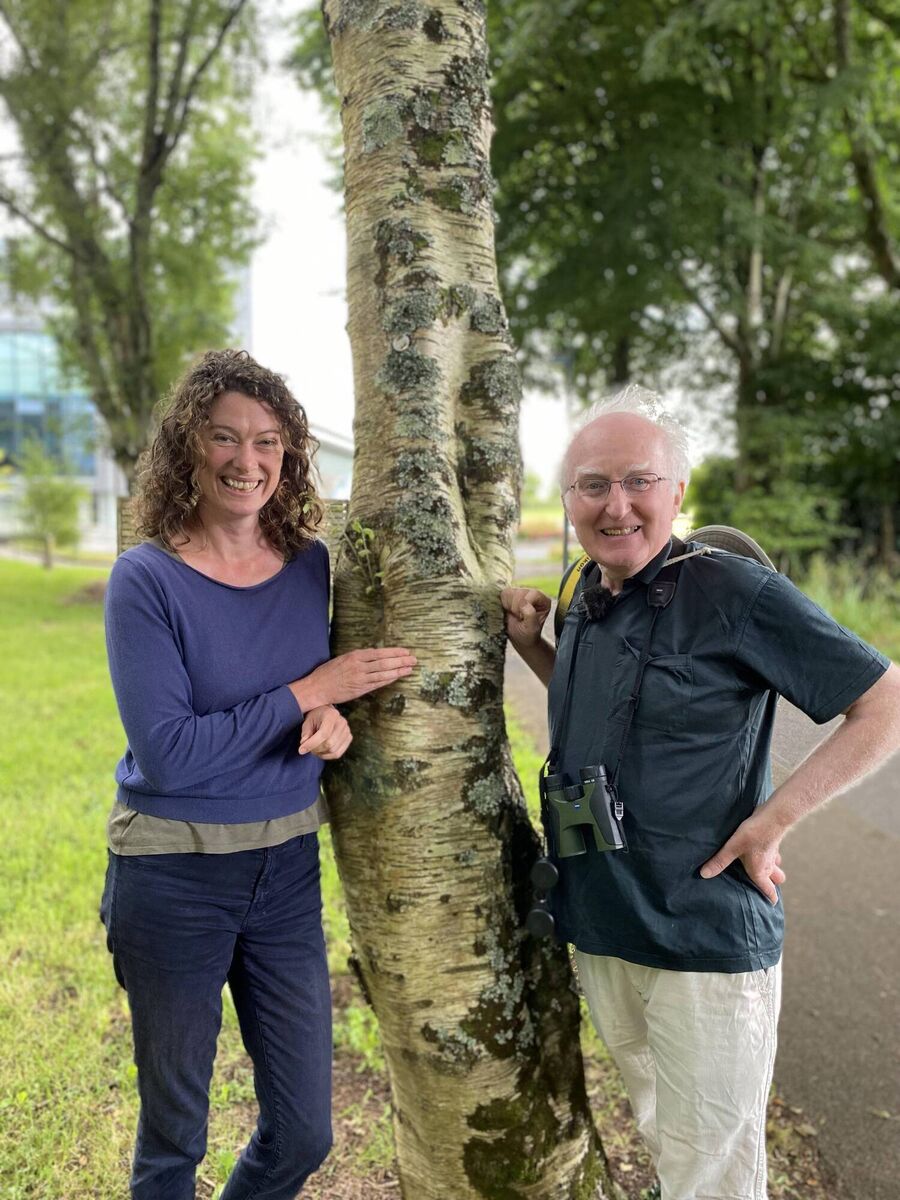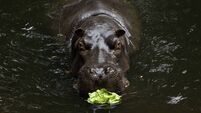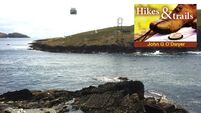Anja Murray: What is a 'native' tree and why is it so valuable?

Brían McGloinn of Ye Vagabonds recording Root & Branch with Anja Murray
At the end of the last great Ice Age that covered Ireland in snow and ice, plants began to colonise the barren landscape. Ice sheets had scraped away the soils, leaving glacial till and rock, but little in the way of fertile soils. On the windswept barren tundra, only the most pioneering plants were hardy enough to survive.
Pioneering trees and shrubs such as birch produce millions of tiny wind-borne seeds, so they find their way to new ground quickly. Within only about 100 years, the first birch woodlands became established across Ireland. Birch trees would have helped soils to form, using the sun’s energy to create carbohydrates and other nutrients, dropping their leaves each autumn and quickly building up the organic content of the sandy soils. Along with other pioneer trees, such as willow and juniper, Ireland was soon transformed into a richly wooded landscape. These trees were the basis for bustling communities of plants and animals, which in turn helped pollinate plants, recycle nutrients, and spread seeds.
As ecosystems developed, other trees became established too, including hazel, pine, elm, oak, alder, ash, hawthorn and holly. These are some of the most widespread of Ireland’s native tree species today. It is these native trees which have moulded every aspect of Ireland’s natural environment and shaped the contours of human society too.
Ecologists today are often keen to emphasise the importance of native trees over introduced species. This is because native trees, generally defined as those that made it here without the intervention of humans, have had a long time to develop in concert with an abundance of other organisms. Beginning in the soil, an array of mycorrhizal fungi grow, attaching themselves to the root tips of trees, helping the trees to absorb water and nutrients as well as providing the connections for trees to share essential compounds with each other. Without the associated interconnecting web of mycorrhizal fungi, trees don’t grow so well, nor are they as resilient to drought, pests or diseases. Leaf litter that falls to the ground is continually assimilated back into the soil by a thriving community of decomposers, communities of bacteria, fungi, protozoa, mites, millipedes, springtails, earthworms and nematodes.
Lichens grow on the bark of trees, each lichen specially adapted to the conditions of the bark of a particular tree species. Mosses provide micro-habitat for all sorts of little invertebrates. Then there are the many insects that live in among the bark, buds, twigs and the leafy canopy. Native species generally have hundreds of different invertebrate species living in and among them, compared to only a few dozen for tree species introduced in the last few hundred years.
Native tree species are adapted to live in reciprocal relationships with all these other organisms, with whom they have often co-evolved. Strategies such as pollination and seed dispersal have been honed through tens of thousands of years of mutualism. Many plants only grow in a woodland setting, and these, in turn, have associations with particular butterflies or moths, who won’t lay their eggs on just any plants — they need the right conditions and the right food plant.
The plethora of small woodland creatures feeding off leaves of native green plants provide protein-rich sustenance for blue tits, chaffinch, robins, wrens, blackbirds, jays and thrushes, and dozens of other native birds, some of which are quite particular in their feeding habits. Mammals too are keen consumers of little critters: bats, shrews, squirrels, mice, foxes, badgers and pine martens.
These are just some of the ways in which native trees are so much richer in biodiversity than those introduced in more recent times. The thing about nature is that if you extract it, it won’t perform as it does in its original environment — without the many symbiotic relationships or the associated diversity of flora and fauna. So trees such as lodgepole pine, sitka spruce and Douglas fir, favoured in plantation forestry, are devoid of the rich webs of life that have been part of the Irish story for millennia.
Ireland has the lowest tree cover of any country in Europe. Even at that, the vast majority of tree cover here is now is made up of uniform rows of North-American conifer plantations, without the colour, diversity, wildlife, or environmental value of our native trees. Because I love Ireland’s native trees so much, and wish that we as a country could transform our relationship with trees, I’ve just finished making a radio series all about Ireland’s native trees. We need to be better at incorporating far higher proportions of native trees into commercial forests; to be far better and managing native semi-natural woodlands; and even far more ambitious about planting native trees in our gardens, towns, cities and among the wider landscape.

To make this radio series, I collaborated with musician Brían Mac Gloinn, who is one half of the acclaimed folk duo, Ye Vagabonds. We had great adventures exploring the ecology, folklore, and musical associations of six of Ireland’s native trees. Each episode portrays the personality of each tree species and its ‘strategy’ in life. For the first episode, which is all about birch trees, we interview a paleo-botanist (someone who studies the history of plants in ancient environments) to find out why birch is so good at colonising new ground and how its physiological characteristics make it so well adapted to surviving in the harshest of conditions. We interview a folklorist about the significance of birch in Irish folklore and music. Because birch has such light, open canopy, it is often planted in parks and as street trees. In the first episode, we also feature the ‘Pocket Forests’ project to discover the potential for planting up far more birch in urban areas.
Based on the trees, and the people, we met in making the series, Brían composed a song for each tree. Each episode features a newly-written and performed song as well as a selection of traditional tunes that have an association with that tree.
is on Lyric FM. The first episode is now available on RTÉ Player. More episodes will be released at the end of the summer. I hope you will enjoy it.






